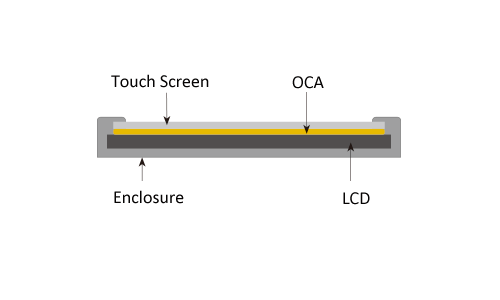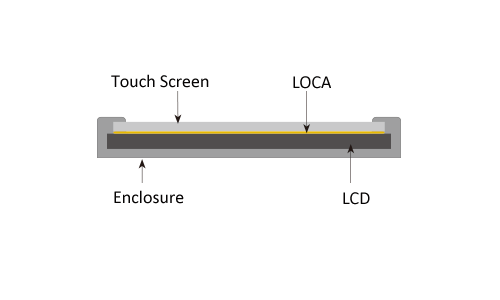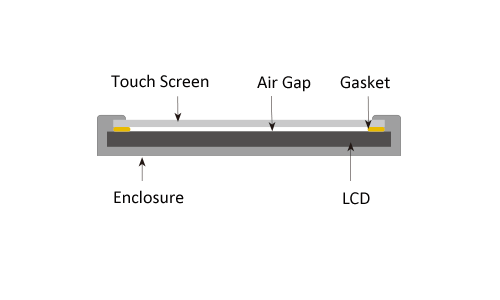Bifa provides both optical bonding (full lamination, or named direct bonding) and air bonding (edge lamination) services to affix cover glass, or touch sensor glass onto the LCD panel to meet various project requirements. Our panel bonding SOP adopts a precise optical bonding process, which eliminates the air gap between glass layers and TFT display, reduces reflectivity, increases contrast ratio and improves display brightness in high ambient light environments.
OCA is used to add film-type of optically clear adhesive between the cover glass and LCD display for display panel assembly. Such an optical bonding is especially significant in sunlight conditions. OCA offers superior clarity and excellent adhesion to eliminate surface-to-surface air gap and reflections from the viewing area to achieve better clarity, color contrast and wider viewing angles.

OCR, or LOCA (Liquid Optical Clear Adhesive), is one of optical bonding technologies, which can provide optimum display clarity required for smartphones and tablet devices. The liquid type bonding adhesive is suitable for use on curve or uneven surfaces. The technology allows thinner and lighter panel construction required for futuristic display designs.

Air gap bonding (also named edge lamination) provides the most economic method for touch panel attachment with a yield rate up to 98%. The adhesive is applied to the inactive border around the viewing area between the display and touch panel. In the result it lacks support between the screen and LCD, which is prone to breakage and moisture. The internal reflecting between layers can lead to poor optical performance.
